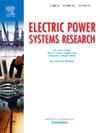基于机器学习的自触发低压混合式直流断路器多参数优化设计
IF 4.2
3区 工程技术
Q2 ENGINEERING, ELECTRICAL & ELECTRONIC
引用次数: 0
摘要
低压直流(LVDC)混合断路器(HCB)具有低导通损耗和高分断性能的优点,更能满足光伏系统的应用需求。其中,基于自然换相的自触发混合断路器(STHCBs)因其结构简单、选择性保护等优点,成为LVDC混合断路器的重要发展方向。然而,现有的设计方法没有充分考虑多个参数的影响,导致中断时电流换相不可靠。为了解决这些问题,本文提出了一种基于机器学习的多参数优化方法。该方法采用长短期记忆(LSTM)算法预测不同短路故障条件下机械开关的中断波形,作为优化的输入。此外,建立了综合考虑电力电子器件特性、电弧行为和驱动电路的hcb中断模型。在理论分析和预测波形的基础上,采用遗传算法确定相应中断波形的最优设计参数。实验结果表明,该方法能有效提高sthcb的中断可靠性,同时具有较强的适应性。该方法为LVDC hcb的设计提供了技术参考。本文章由计算机程序翻译,如有差异,请以英文原文为准。
Multi-parameter optimization and design of self-triggered low voltage hybrid DC circuit breaker based on machine learning
The low-voltage direct current (LVDC) hybrid circuit breaker (HCB), with advantages of low conduction loss and high breaking performance is better to meet the application needs of photovoltaic system. Among these, self-triggered hybrid circuit breakers (STHCBs) based on natural commutation have become an important development direction for LVDC HCBs due to their simple structure and selective protection. However, existing design methods do not adequately consider the influence of multiple parameters, resulting in unreliable current commutation during interruption. To address these issues, this paper proposes a machine learning-based multi-parameter optimization method. The method employed Long Short-Term Memory (LSTM) algorithm to predict the interruption waveforms of mechanical switches under different short-circuit fault conditions as an input to the optimization. In addition, an interruption model of HCBs was developed, which comprehensively considered power electronic device characteristics, arc behavior and drive circuit. Based on the theoretical analysis and predicted waveforms, we used Genetic Algorithm (GA) to determine the optimal design parameters for the corresponding interruption waveforms. Experiment results confirm that this method can effectively enhance the interruption reliability of STHCBs while also demonstrates adaptability. The proposed method provides technical reference for the design of LVDC HCBs.
求助全文
通过发布文献求助,成功后即可免费获取论文全文。
去求助
来源期刊

Electric Power Systems Research
工程技术-工程:电子与电气
CiteScore
7.50
自引率
17.90%
发文量
963
审稿时长
3.8 months
期刊介绍:
Electric Power Systems Research is an international medium for the publication of original papers concerned with the generation, transmission, distribution and utilization of electrical energy. The journal aims at presenting important results of work in this field, whether in the form of applied research, development of new procedures or components, orginal application of existing knowledge or new designapproaches. The scope of Electric Power Systems Research is broad, encompassing all aspects of electric power systems. The following list of topics is not intended to be exhaustive, but rather to indicate topics that fall within the journal purview.
• Generation techniques ranging from advances in conventional electromechanical methods, through nuclear power generation, to renewable energy generation.
• Transmission, spanning the broad area from UHV (ac and dc) to network operation and protection, line routing and design.
• Substation work: equipment design, protection and control systems.
• Distribution techniques, equipment development, and smart grids.
• The utilization area from energy efficiency to distributed load levelling techniques.
• Systems studies including control techniques, planning, optimization methods, stability, security assessment and insulation coordination.
 求助内容:
求助内容: 应助结果提醒方式:
应助结果提醒方式:


